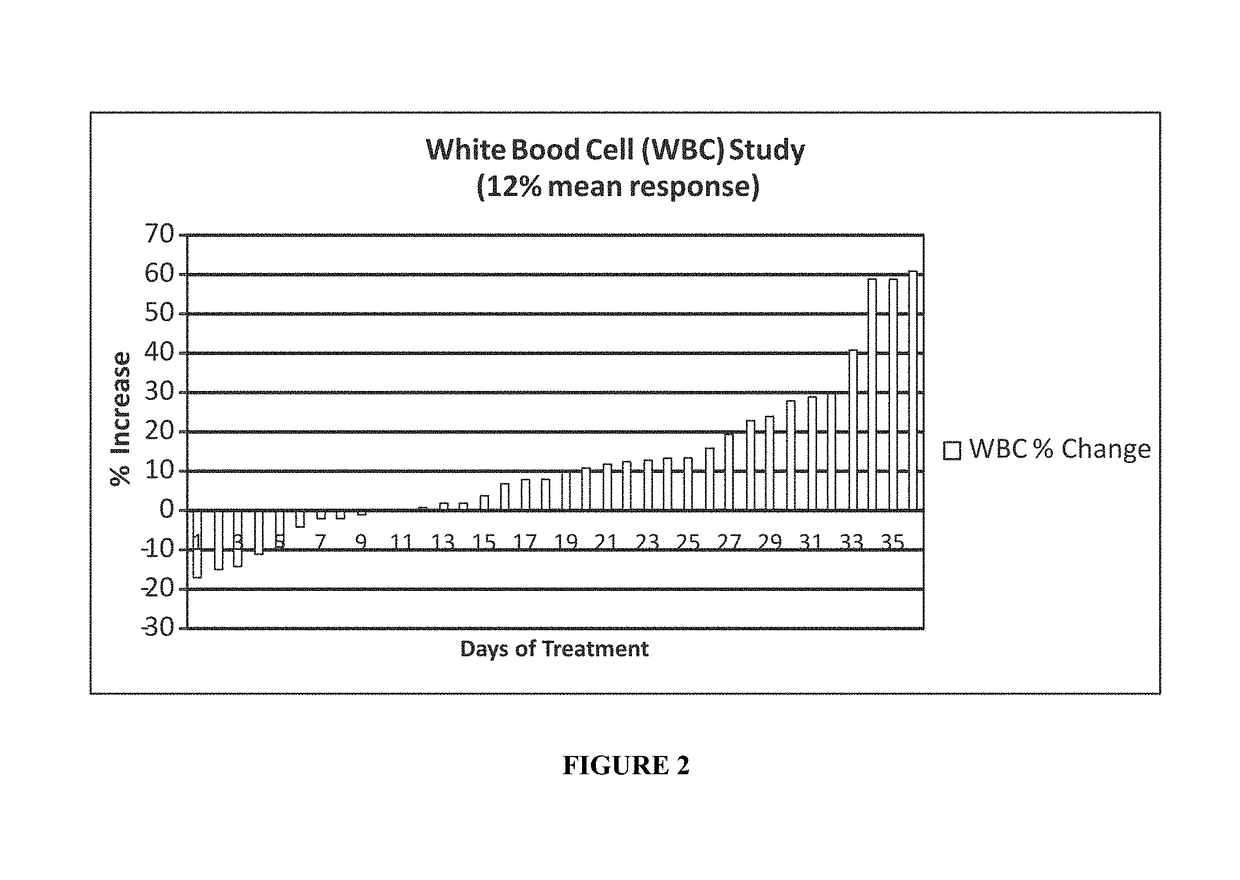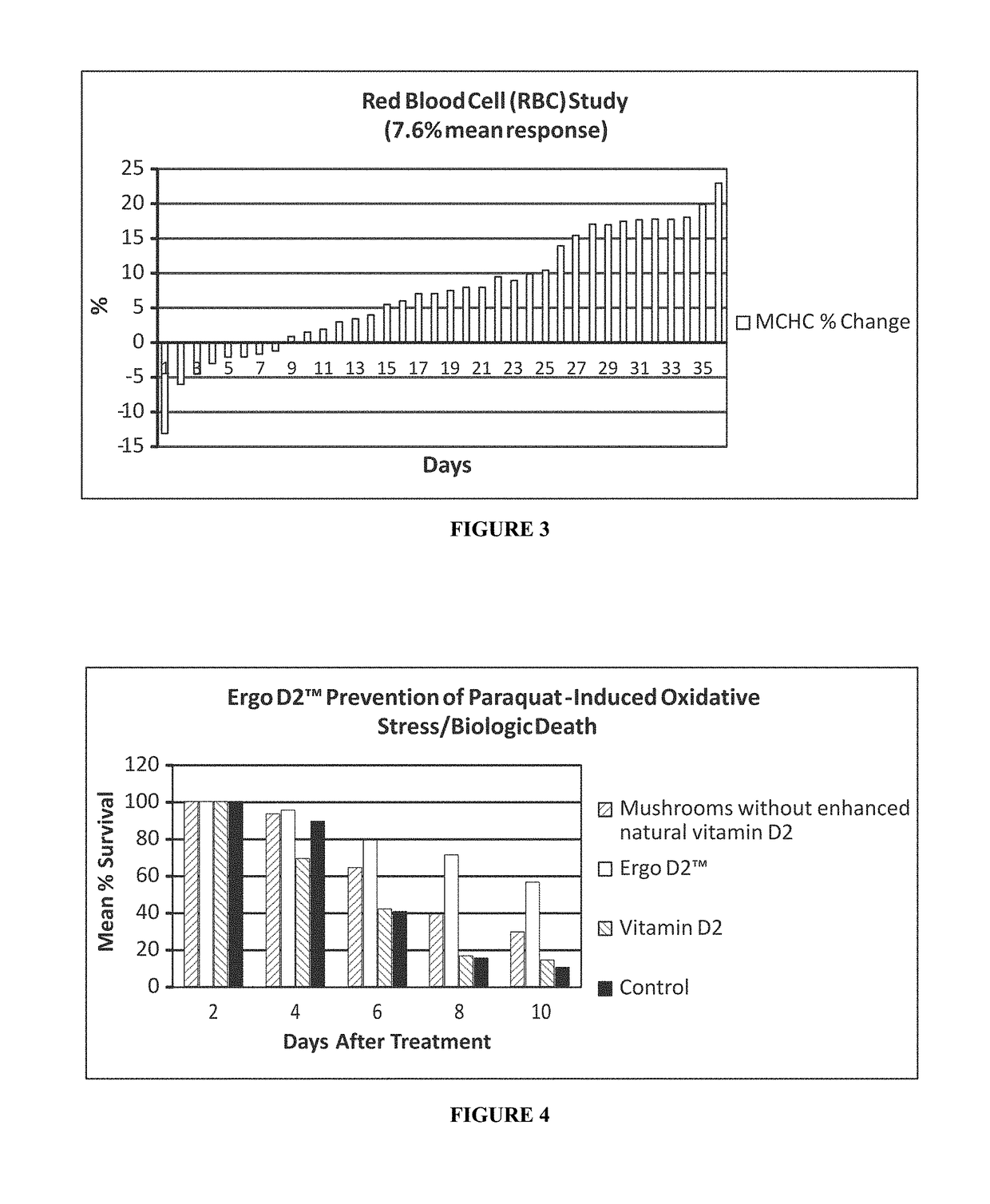Nutritional approach to the control of anemia, diabetes and other diseases or conditions and prevention of associated comorbid states with the use of ergothioneine
a technology of ergothioneine and ergothioneine, which is applied in the direction of drug compositions, peptide/protein ingredients, metabolic disorders, etc., can solve the problems of mitochondrial dna damage, protein oxidation and lipid peroxidation, and achieve the effect of enhancing ergothioneine and vitamin d and enhancing the content of ergothionein
- Summary
- Abstract
- Description
- Claims
- Application Information
AI Technical Summary
Benefits of technology
Problems solved by technology
Method used
Image
Examples
example 1
[0136]Experiments testing the anti-inflammatory effects of mushroom-based formulations with increased natural levels of Ergothioneine according to the invention were tested in an equine inflammatory gum disease study. Elderly horses with inflammatory gum were treated with a mushroom-based formulation, 10 grams per day, for 30-60 days; formulations used were selected because of increased natural levels of Ergothioneine. Horses showed dramatic improvement in the severity of the gum disease within 30-60 days as shown in FIG. 1.
example 2
[0137]White Blood Cell (WBC) Study
[0138]A separate 30 day clinical animal study, involving 36 horses, fed mushroom-based formulations, revealed a statistically significant increase in numbers of white blood cells; mean response among the study sample was 12%. The results are shown in FIG. 2. This percentage increase in white blood cells within a 30 day period after dietary supplementation is further supportive evidence for improvement in the animal's immune response and ability to suppress inflammatory diseases, such as gum disease.
[0139]Inflammatory disease of the gums is a perfect example of the inflammatory process that occurs in other tissues and / or organ systems, such as arteries, nerves, heart, colon, and brain, to name a few. The terms inflammation, free radicals, reactive oxygen species (ROS) and oxidative stress are almost interchangeable and a clear understanding of the interactive processes has uncovered new approaches to prevention and amelioration of inflammation and or...
example 3
[0145]Pulses of UV radiation of approximately 1-10 J / cm2 per pulse, preferably 3-8 J / cm2 and most preferably 5-6 J / cm2 are used to UV-enhance Vitamin D and / or its derivatives in filamentous fungi. Voltages may also vary based upon safety concerns but should generally be in the range of 1 to 10 or even up to 100 or 10,000 volts as safety mandates. The pulses should generally be in a range of 1-50 pulses per second more preferably 1-30 pulses per second and most preferably 1-10 pulses per second for a range of treatment post-harvest of 0 to 60 seconds.
[0146]The inventors used 5.61 J / cm2 per pulse on the strobe surface for an input voltage of 3800V and with 3 pulses per second. Sliced mushrooms (Agaricus bisporus, white strain) were placed in the pulsed UV-light sterilization chamber and treated with pulsed light for up to a 20-second treatment at a distance of 17 cm from the UV lamp or 11.2 cm from the window. Control samples did not undergo any pulsed UV treatment. Treated mushrooms ...
PUM
| Property | Measurement | Unit |
|---|---|---|
| pH | aaaaa | aaaaa |
| input voltage | aaaaa | aaaaa |
| distance | aaaaa | aaaaa |
Abstract
Description
Claims
Application Information
 Login to View More
Login to View More - R&D
- Intellectual Property
- Life Sciences
- Materials
- Tech Scout
- Unparalleled Data Quality
- Higher Quality Content
- 60% Fewer Hallucinations
Browse by: Latest US Patents, China's latest patents, Technical Efficacy Thesaurus, Application Domain, Technology Topic, Popular Technical Reports.
© 2025 PatSnap. All rights reserved.Legal|Privacy policy|Modern Slavery Act Transparency Statement|Sitemap|About US| Contact US: help@patsnap.com



